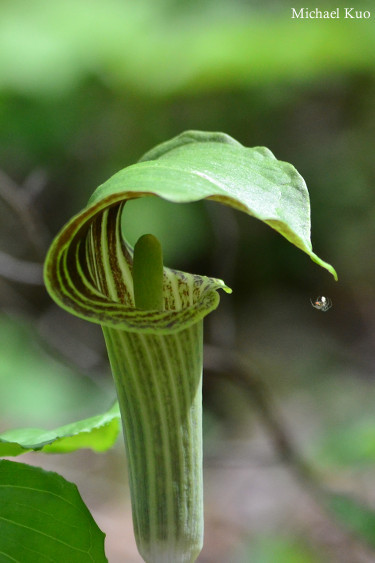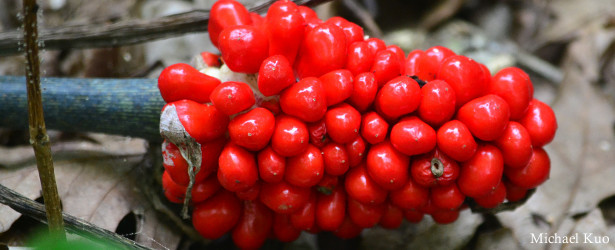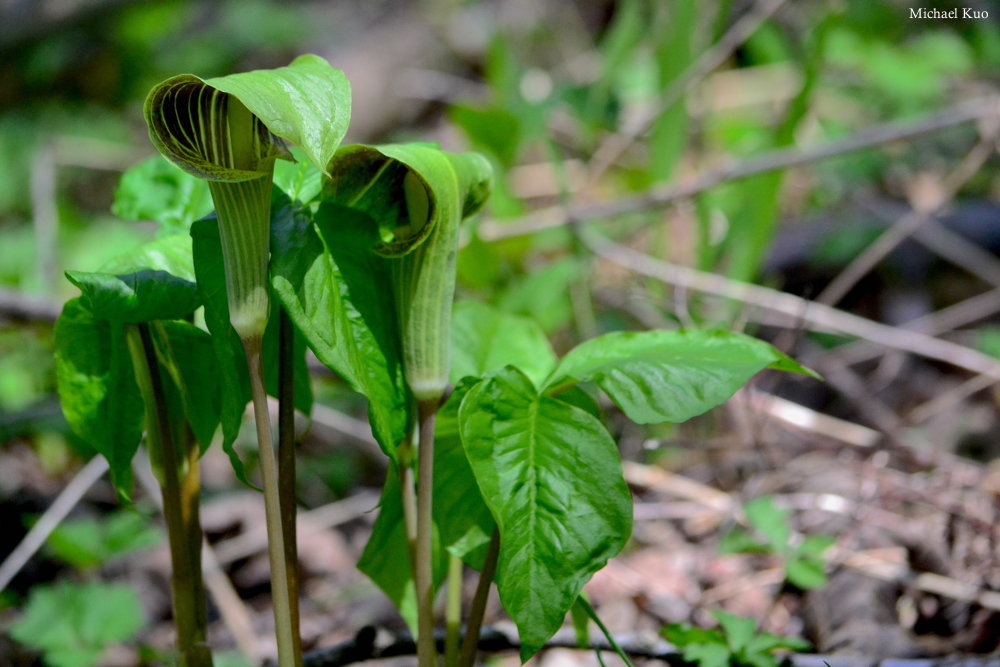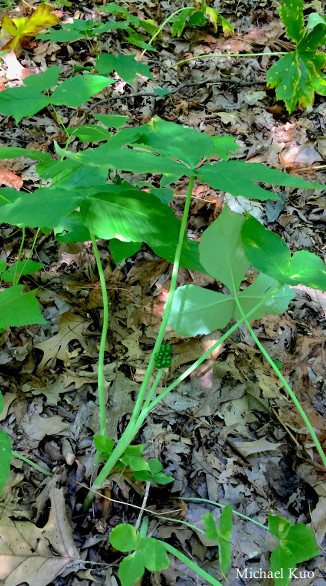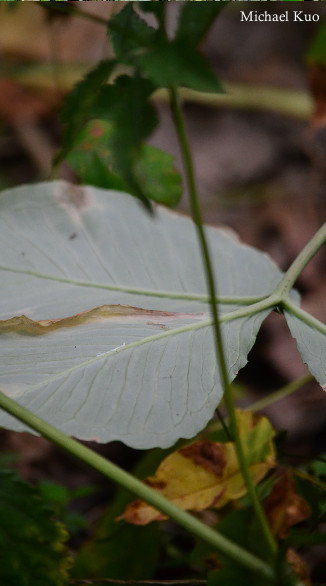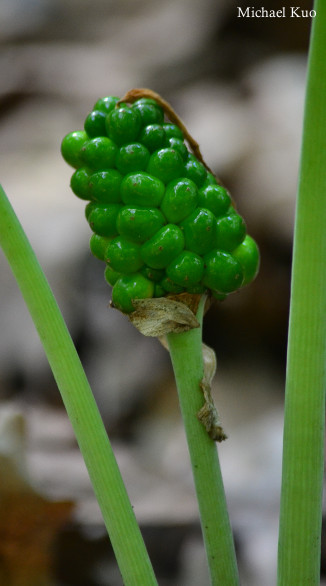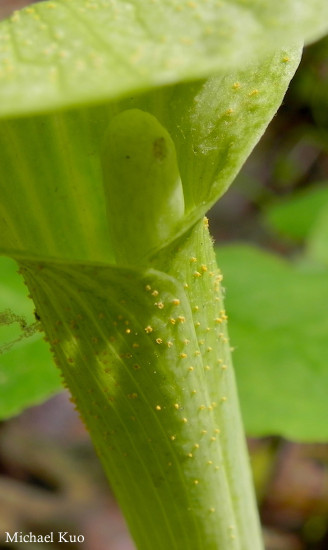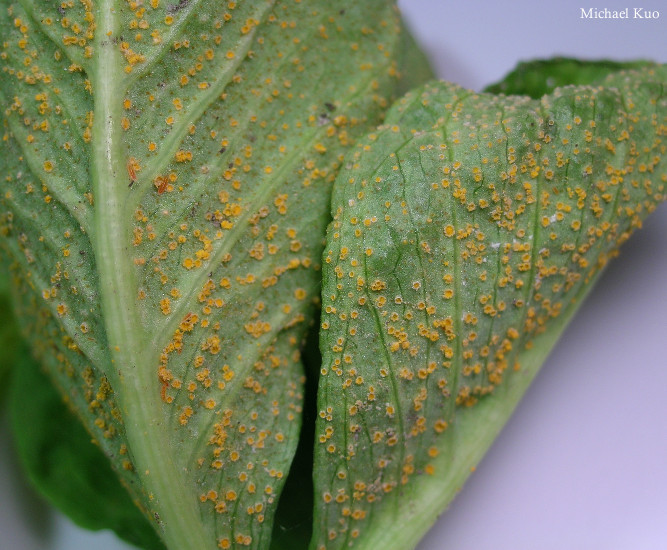
Arisaema triphyllum (Jack-in-the-pulpit) |
|
|
In summer, Arisaema triphyllum loses its flower and, if it has been successfully cross-pollinated by flies, fungus gnats, and thrips, the plant produces attractive, berry-like fruits in bunches: at first green and, by late summer or early fall, bright red. Many hikers see these berry clumps but are unaware that they belong to the same plant they recognized in the spring! Arisaema triphyllum has large compound leaves with three leaflets, and is therefore sometimes mistaken for poison ivy. But the leaves of poison ivy are smaller, often notched, and are attached to climbing, ivy-like plant stems; the leaves of Jack-in-the-pulpit are attached to a long leaf-stem arising from the base of the plant.
|
|
According to some authors, up to four subspecies of Arisaema triphyllum occur in the Midwest. The typical subspecies, Arisaema triphyllum triphyllum, is pictured here. Two southern subspecies, both of which are recorded in the Midwest, include Arisaema triphyllum quinatum (with five, rather than three, leaflets; recorded from Kentucky) and Arisaema triphyllum pusillum (a "dwarf" version inhabiting wet woods and usually lacking purple striations; recorded from Kentucky and southern Illinois). A northeastern subspecies, Arisaema triphyllum stewardsonii, features a strongly ridged "pulpit"; it is recorded from Kentucky. |
|
|
|
|
|
|
|
Uromyces ari-triphylli (Jack-in-the-pulpit rust) This fungus—or, more specifically, this rust—attacks Jack-in-the-pulpit plants. In one study (Parker 1987) nearly one-third of Jack-in-the-pulpit plants surveyed were found to be infected. Uromyces ari-triphylli overwinters in the plant's underground bulb, then spreads in spring over the leaves, creating yellowish-orange lesions which release spores. The rust reduces leaf surface area and leaf lifespan, and results in decreased ability of the plant to clone itself through its bulbs. Since Arisaema triphyllum reproduces both sexually and asexually, the rust may be acting to encourage sexual reproduction over cloning, ultimately helping the plants maintain biodiversity. |
|
|
|
|
References: GN Jones 1971, Parker 1987, Kricher & Morrison 1988, RL Jones 2005, Voss & Reznicek 2012, Kurz 2014, Mohlenbrock 2014, Hilty 2017, USDA 2017. Kuo, Michael & Melissa Kuo (September, 2017). Arisaema triphyllum (Jack-in-the-pulpit). Retrieved from the midwestnaturalist.com website: www.midwestnaturalist.com/arisaema_triphyllum.html All text and images © , midwestnaturalist.com. |
